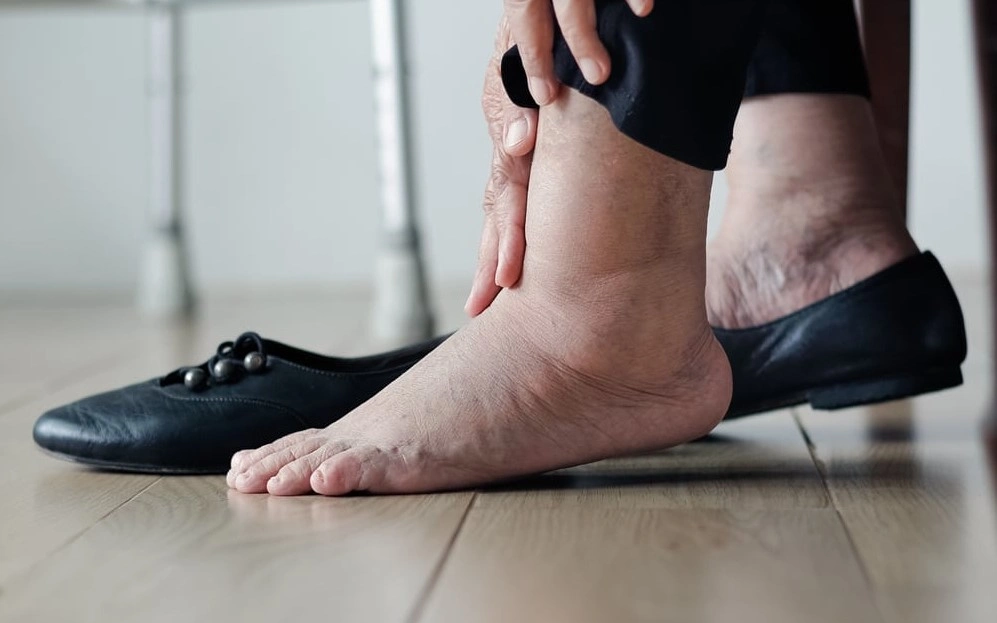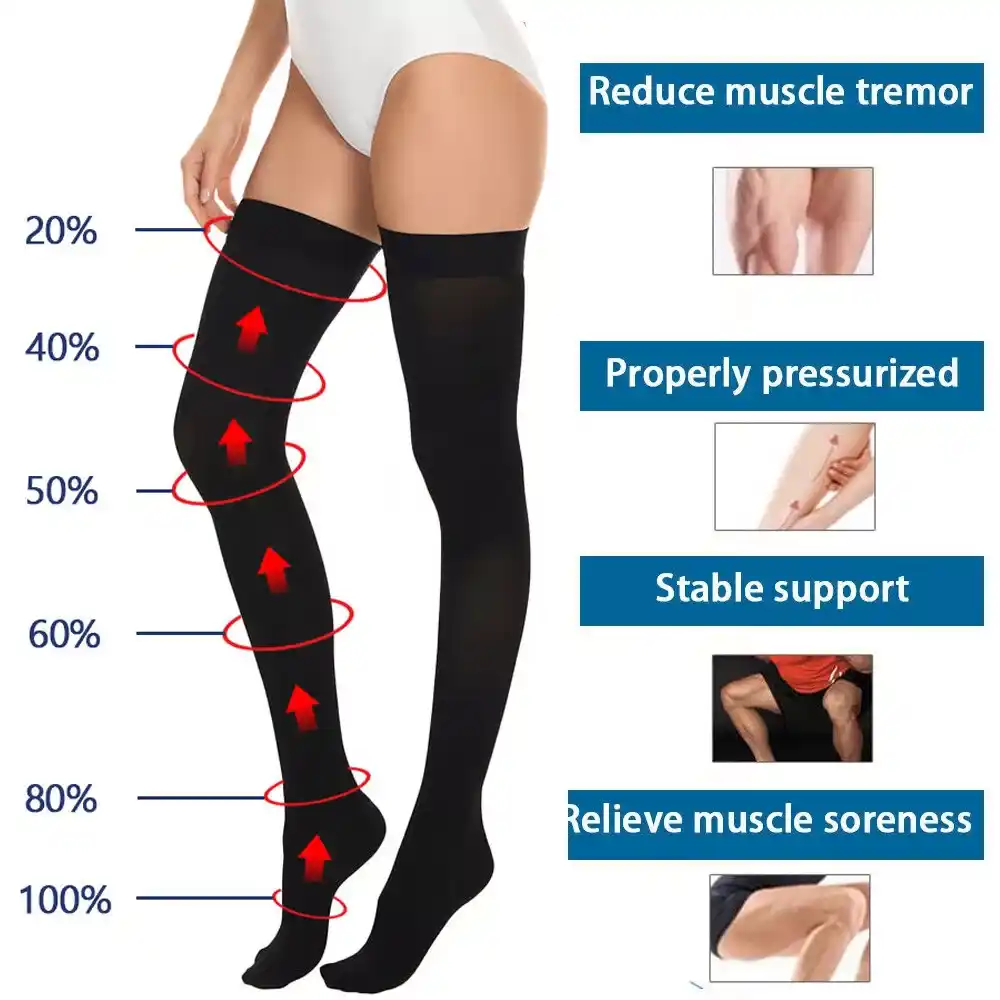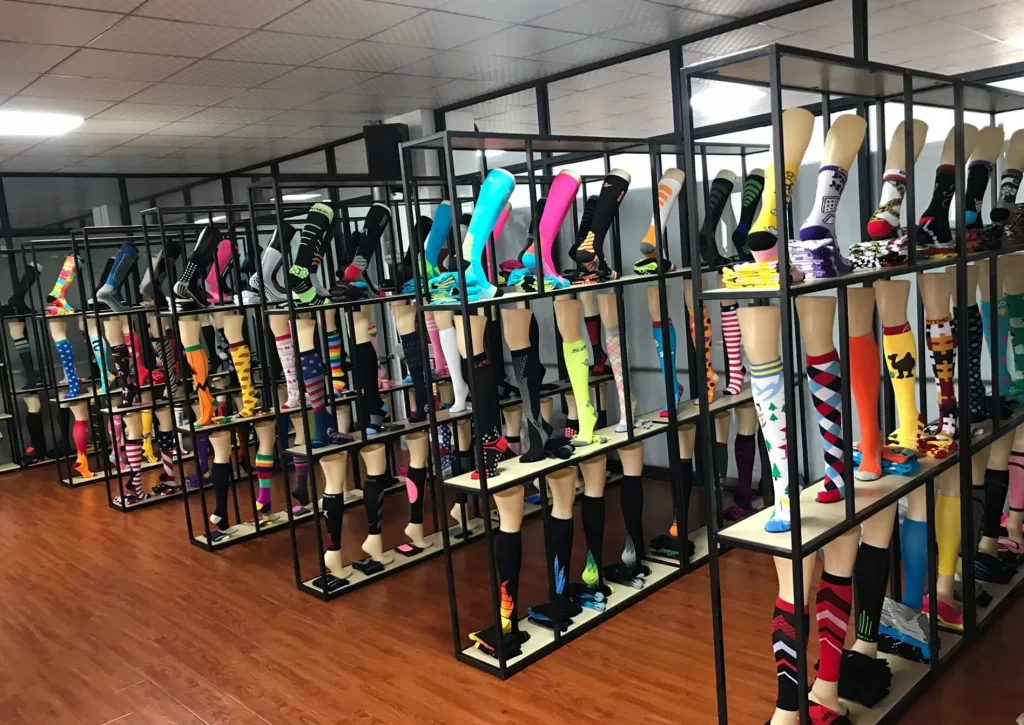Introduction
Determining the right amount of time to wear compression socks remains a common question for both new and experienced users. These specialized garments provide graduated pressure to improve circulation and reduce swelling, but wearing them incorrectly—either too briefly or for excessive periods—can diminish their benefits or potentially cause discomfort. Many users struggle to find reliable information about optimal wearing schedules for their specific needs and lifestyle requirements. Max Hosiery has manufactured premium compression garments for over a decade, working closely with healthcare professionals to develop products that balance therapeutic benefits with practical wearability. Our extensive customer feedback and professional consultations have provided valuable insights into effective wearing durations across various user scenarios and health conditions. This comprehensive guide addresses the critical question of how long to wear compression socks for maximum benefit while maintaining comfort and safety across different situations and health needs.

Why Wearing Duration Matters For Compression Therapy
Compression socks work by applying external pressure that helps push blood and fluid back toward the heart, preventing pooling in the lower extremities. Consistent, sustained pressure over meaningful time periods is essential to achieve therapeutic benefits. But here’s the kicker… Wearing compression socks for too short a duration often fails to provide sufficient circulatory support. Beginners commonly remove their garments at the first sign of mild discomfort, not realizing that a brief adjustment period is normal. Conversely, wearing compression socks for excessively long periods without appropriate breaks can lead to skin irritation or pressure points in sensitive individuals. Establishing a consistent wearing schedule based on your specific health needs and daily activities is crucial. Max Hosiery recommends personalized wearing plans—developed with our customer service team—to maximize therapeutic benefits while ensuring comfort throughout the day. Understanding the underlying science helps users appreciate why proper duration is key to achieving desired results.
| Compression Level | Recommended Daily Wear | Notes |
|---|---|---|
| 8–15 mmHg | All waking hours | Mild support, preventive |
| 15–20 mmHg | 8–12 hours | General therapeutic use |
| 20–30 mmHg | 4–6 hours* | Stronger therapy, monitor comfort |
Daily Wearing Guidelines For Different Compression Levels
The appropriate daily wearing time varies significantly based on the compression level of your garments. Ready for the good part? Lighter compression (8–15 mmHg) can typically be worn throughout waking hours, providing gentle support without excessive pressure. These mild socks act much like a soft hug around your calf, perfect for all-day wear when you need basic preventive benefits—whether you’re running errands, working in an office, or simply lounging at home. Many first-time users appreciate how this level improves leg comfort without feeling restrictive at all.
Moderate compression (15–20 mmHg)—the most common range—works best for 8–12 hours daily, making it ideal for professionals who spend long periods standing or walking. Nurses, retail associates, teachers, and factory workers often report that moderate compression socks dramatically reduce end-of-day fatigue and swelling. Numerous customer surveys indicate that individuals in this compression range experience up to 50% less evening leg heaviness compared to those wearing only standard support socks. What’s the real story? Consistent use in this range not only alleviates symptoms but can also improve long-term vein health when combined with occasional walking breaks.
Higher compression levels (20–30 mmHg and above) require more careful monitoring of wearing time. Many users find that 4–6 hours is sufficient to manage pronounced edema or varicose vein discomfort without causing undue tightness or circulatory issues. However, specific medical conditions—such as post-thrombotic syndrome or advanced venous insufficiency—may necessitate longer daily wear under professional guidance. But here’s the kicker… choosing too high a compression level for too long can backfire, leading to numbness or pressure marks that linger. Always consult healthcare providers before using medical-grade compression above 20 mmHg to ensure your wearing schedule matches your health needs.
How Long Should You Wear Compression Socks While Traveling?
Travel scenarios create unique compression requirements. For air travel, wear compression socks from before takeoff until 1–2 hours post-landing to ensure proper circulation restoration. For road trips, keep them on during driving periods and brief walking breaks every 1–2 hours to optimize benefits. Many travelers mistakenly remove their socks during rest stops—don’t do it. Max Hosiery travel compression products feature non-binding tops and moisture-wicking materials designed for extended comfort on long journeys. Our customers report significant reductions in travel-related swelling when adhering to these duration guidelines, especially on flights exceeding six hours.
| Travel Type | Wear Duration | Breaks |
|---|---|---|
| Flights | Full flight + 1–2 hrs | Post-landing walk |
| Road trips | Driving periods | Walk every 1–2 hrs |
Overnight Wearing: When Is It Appropriate?
Overnight wear of standard daytime compression socks is generally not recommended. Most are calibrated for upright or seated positions; lying down alters pressure gradients and may create pressure points. For mild to moderate circulatory concerns, removing socks before bed and reapplying in the morning offers the best balance of skin health and therapeutic benefit. However, some medical conditions require specialized nighttime compression garments designed for recumbent positions. Max Hosiery offers these specialized options—available only under professional guidance—to ensure safe 24-hour support when medically indicated.
Wearing Duration For Athletes And Active Individuals
Athletes have unique needs. For performance enhancement during activity, wear compression socks throughout exercise periods, whether a 30-minute run or day-long hike. For recovery, 1–3 hours post-workout helps reduce inflammation and support muscle recovery; some extend to 4–6 hours after intense sessions. Max Hosiery athletic compression lines feature reinforced zones to withstand movement stresses while maintaining therapeutic pressure. This targeted wearing schedule improves both performance and recovery without compromising comfort.
How Long Should You Wear Compression Socks For Specific Medical Conditions?
Compression therapy for medical conditions often comes with precise wearing-time recommendations. Conditions like chronic venous insufficiency benefit from wearing compression socks throughout waking hours—typically 8–12 hours daily—removing garments only for bathing and sleeping. This consistent schedule manages symptoms and may slow condition progression. Lymphedema patients, however, often require more complex routines: higher daytime compression (8–10 hours) and lower maintenance compression for evening activities. In advanced cases, specialized overnight garments may be prescribed, creating near–24-hour management protocols.
Post-surgical recovery also demands tailored schedules. After vascular or orthopedic procedures, patients may initially wear compression continuously (removed only for hygiene) before transitioning to daytime-only wear as healing progresses. This phased approach supports recovery without compromising blood flow. Max Hosiery collaborates with medical professionals to supply products for each recovery stage, ensuring patients have appropriate options as their needs evolve. Consistent adherence to prescribed schedules maximizes therapeutic benefit and accelerates recovery.
Signs You’re Wearing Compression Socks Too Long
While compression provides clear benefits, overuse can lead to adverse effects that undermine therapy. But here’s the kicker… recognizing warning signs early lets you adjust your schedule before minor issues become major inconveniences. Persistent indentations on the skin that don’t fade within 15–20 minutes of removal indicate excessive pressure duration or incorrect fit. These depressions—often around the calf, ankle, or top band—signal that the fabric’s elasticity has been on your skin for too long or at too high a tension level.
Numbness or tingling, meanwhile, warrants immediate removal. These sensations suggest that circulation is too restricted or the compression level is too high for your individual needs. What’s the real story? Even slight nerve compression can lead to reduced blood flow, causing pins-and-needles or a “falling asleep” feeling in your feet. If these symptoms persist or worsen, it’s time to consult a healthcare provider about adjusting compression strength or fitting.

Similarly, redness, itching, or unusual discoloration around compression areas flags potential skin irritation from overuse. Heat rash, contact dermatitis, or even pressure ulcers can develop if socks remain tight and damp against the skin without breaks. Slower evaporation of sweat under compression can exacerbate these issues, particularly in sensitive individuals or those prone to skin conditions.
Regular self-exams help distinguish normal pressure marks from issues requiring adjustment. Beginners should start with shorter durations—around 3–4 hours—and gradually increase wearing time over one to two weeks, allowing the body to adapt to graduated pressure. During this acclimation period, schedule mid-day breaks where you remove socks, inspect your skin, and massage areas showing indentations or redness.
Max Hosiery’s customer service team provides guidance on recognizing warning signs and adjusting schedules. We recommend keeping a daily log of wearing durations and any skin or sensation changes. Prompt reaction to these indicators prevents discomfort and ensures continued safe use of compression therapy.
Establishing A Healthy Rotation Schedule For Daily Wear
Using multiple pairs in rotation significantly enhances both therapeutic consistency and garment lifespan, making it a best practice for anyone relying on compression therapy. Each pair of compression socks is engineered to deliver precise graduated pressure, which depends on elastic fibers that naturally relax over time with wear and washing. By alternating at least two pairs, you grant each set ample recovery time for its elasticity to rebound fully before its next use. This approach maintains consistent compression levels day to day, preventing the gradual pressure loss that occurs when a single pair is worn continuously without adequate rest.
Here’s the kicker: rotation not only preserves elastic integrity but also ensures uninterrupted therapy. Imagine you wear Pair A for your morning shift—roughly 8–10 hours—then switch to Pair B for your afternoon and evening activities if continued support is necessary. While you’re on Pair B, Pair A is being washed and air-dried according to care instructions, emerging ready to deliver full compression the next day. This scheduling avoids any therapeutic gaps that could result from using a single pair stuck in the laundry queue.
But here’s where it gets interesting: rotation also minimizes daily wear-and-tear. Compression socks experience the most strain in high-friction areas like heels and toes. Rotating pairs spreads this stress across multiple garments, delaying fabric thinning, seam stress, and elastic fatigue. Max Hosiery’s value packs are designed precisely for this need, offering complementary styles—from professional dress options to casual weekend looks and high-performance athletic designs—each engineered with identical compression profiles. Our customers report that rotating through these sets not only boosts comfort and style variety but also extends the functional life of each pair by up to 50% compared to single-pair use.
This rotation strategy represents a simple yet powerful way to maximize both the health benefits and the economic value of your compression investment.
Seasonal Adjustments To Compression Sock Wearing Time
Seasonal changes affect optimal wearing durations. In summer, high heat and humidity can exacerbate skin issues under compression. Users benefit from scheduled short breaks (15–20 minutes) during peak heat to cool and dry the skin. Lightweight, breathable compression materials enhance comfort but rotating breaks prevents moisture buildup and irritation.
Winter’s cooler temperatures allow longer wear, but dry air may dry skin excessively. Incorporating moisturizing routines during removal periods prevents cracking. Thermal compression blends add warmth without sacrificing pressure gradients, making extended wear comfortable even in cold conditions. Max Hosiery’s season-specific lines—summer-weight with moisture-wicking properties and winter-weight with thermal fibers—ensure effective therapy year-round.
| Season | Recommended Wear | Material Features |
|---|---|---|
| Summer | 8–10 hrs | Lightweight, breathable |
| Winter | 10–12 hrs | Thermal, moisture control |
Workplace Considerations For Compression Sock Duration
Occupation heavily influences wearing schedules. Professionals on their feet—healthcare workers, retail staff, industrial laborers—often require full-shift wear (8–12 hours) to alleviate end-of-day swelling and fatigue. Compression socks with antimicrobial finishes can combat bacterial growth in high-humidity work environments.
Office workers, primarily seated, face different challenges. Regular movement breaks (5–10 minutes hourly) while keeping socks on enhances circulation. Some prefer brief removal during lunch for skin breathing before afternoon wear. Max Hosiery’s occupation-specific products include clinical compression with antimicrobial properties for healthcare, and soft, low-profile designs for office wear—both engineered for long wearing periods without sacrificing therapeutic benefit.
Pregnancy-Specific Compression Wearing Guidelines
Pregnancy brings unique circulatory challenges that demand tailored compression schedules. In early pregnancy, 4–6 hours of compression during periods of swelling (e.g., long standing) often suffices. As fluid retention increases in the second and third trimesters, many women benefit from extending wear to 8–10 hours daily. Applying compression socks first thing in the morning—before getting out of bed—maximizes preventative benefits by countering fluid accumulation before it starts.
Max Hosiery’s maternity line accommodates growing calves and changing ankle-to-calf ratios with adjustable tops and graduated compression. Our customers report reduced leg fatigue and less swelling when following these pregnancy-specific durations. Always consult a healthcare provider before beginning or adjusting compression routines during pregnancy.
| Trimester | Recommended Wear | Key Feature |
|---|---|---|
| First | 4–6 hrs | Adjustable top bands |
| Second | 6–8 hrs | Maternity-sized fit |
| Third | 8–10 hrs | Supporting evolving calf size |
Compression Duration After Specific Activities
Certain activities spike fluid shifts, making timed compression crucial afterward. After intense lower-body workouts—like running, HIIT, or cycling—1–3 hours of post-exercise compression supports recovery by reducing inflammation and enhancing blood flow. Similarly, after long tours or shopping sprees, 2–4 hours of compression socks helps legs return to baseline more quickly. For air travel, wearing compression socks throughout the flight plus 1–2 hours post-landing optimizes circulation restoration after cabin pressure changes and prolonged sitting.
Max Hosiery’s recovery-specific lines feature pressure profiles that focus on distal-to-proximal fluid movement, distinct from prevention-oriented daytime socks. Our customers using these recovery garments consistently report faster post-activity relief and reduced muscle soreness.
| Activity | Wear Duration | Compression Type |
|---|---|---|
| Intensive workout | 1–3 hrs | Recovery gradient |
| Long standing | 2–4 hrs | Moderate gradient |
| Flight (>4 hrs) | Flight + 2 hrs | Travel compression |
Adjusting Wearing Time As Your Needs Change
Compression needs evolve with lifestyle, health status, and environment. Weight fluctuations, medication changes, seasonal shifts, and new diagnoses all influence optimal wear times. Users may start with 8-hour wear, then scale back to 4–6 hours once symptoms improve. Conversely, progressing conditions like advancing venous disease may necessitate longer daily durations or higher compression levels. Periodic reassessment—ideally every 3–6 months or after major life events—ensures continued effectiveness.
Max Hosiery’s ongoing support helps users recognize when adjustments are needed. Our customer service provides personalized recommendations for transitioning between schedules, compression levels, and sock styles as circumstances change. This dynamic approach keeps therapy aligned with individual needs over time.
Building A Sustainable Long-Term Wearing Routine
Consistency, not maximum duration, drives long-term benefits. Users achieve better outcomes by integrating compression application into daily routines—pairing it with morning rituals (e.g., brushing teeth) or evening wind-down practices (e.g., reading). This habit formation encourages compliance and prevents skipped days, which diminish cumulative benefits. Moderation also matters: wearing socks tolerably each day better outperforms occasional marathon wear sessions that lead to discomfort.
Max Hosiery’s designs prioritize everyday comfort—non-binding tops, moisture-wicking fabrics, and stylish options—that encourage regular use. Combined with clear care and rotation guidelines, these features foster sustainable routines. Users with balanced schedules report consistent symptom control and higher satisfaction than those with on-off compression habits.
Professional Guidance For Personalized Wearing Schedules
General guidelines provide a starting point, but personalized schedules based on medical evaluations ensure optimal benefit. Healthcare providers assess circulatory health, skin integrity, and lifestyle factors to recommend durations, compression levels, and sock types. Regular follow-ups enable fine-tuning—such as extending wear during flare-ups or scaling back during recovery phases.
Max Hosiery partners with medical professionals to align product offerings with clinical needs. Our medical-grade lines meet certification standards (e.g., FDA, CE), and we support provider-directed regimens with product options tailored to varied wearing schedules—from brief therapeutic sessions to full-day wear. This collaboration ensures men and women receive compression therapy safely and effectively in their unique circumstances.
Conclusion
Determining the right wear time for compression socks requires balancing therapeutic efficacy with personal comfort and lifestyle demands. From general preventative use (8–12 hours/day) to activity-specific recovery (1–4 hours post-exercise), and from pregnancy routines to travel protocols, optimal durations vary by scenario. Overuse can cause irritation, while underuse fails to deliver benefits. Consistent adherence, informed by professional guidance, drives the best outcomes.

Max Hosiery’s decade of expertise and collaboration with healthcare professionals yields a diverse product range designed for varied wearing schedules. Our garments combine precise pressure profiles, durable materials, and practical features that support sustainable, comfortable wear. By following evidence-based guidelines and establishing realistic routines, users can maximize circulation, reduce swelling, and enhance overall leg health.
FAQ
How long should compression socks be worn during travel?
For flights, wear socks from pre-takeoff until 1–2 hours after landing; for road trips, keep them on during travel and brief walking breaks.
Can wearing compression socks too long be harmful?
Yes—excessive wear may cause skin irritation, pressure points, or restricted circulation; take breaks when advised.
Should compression socks be worn overnight?
Standard daytime socks should generally be removed at bedtime; specialized night garments exist for 24-hour management if prescribed.
How long should beginners wear compression socks?
Start with 3–4 hours and gradually increase over 1–2 weeks to allow adaptation to graduated pressure.
How often should compression socks be replaced?
Replace every 4–6 months with daily use, as elastic fibers lose effectiveness over time despite proper care.
